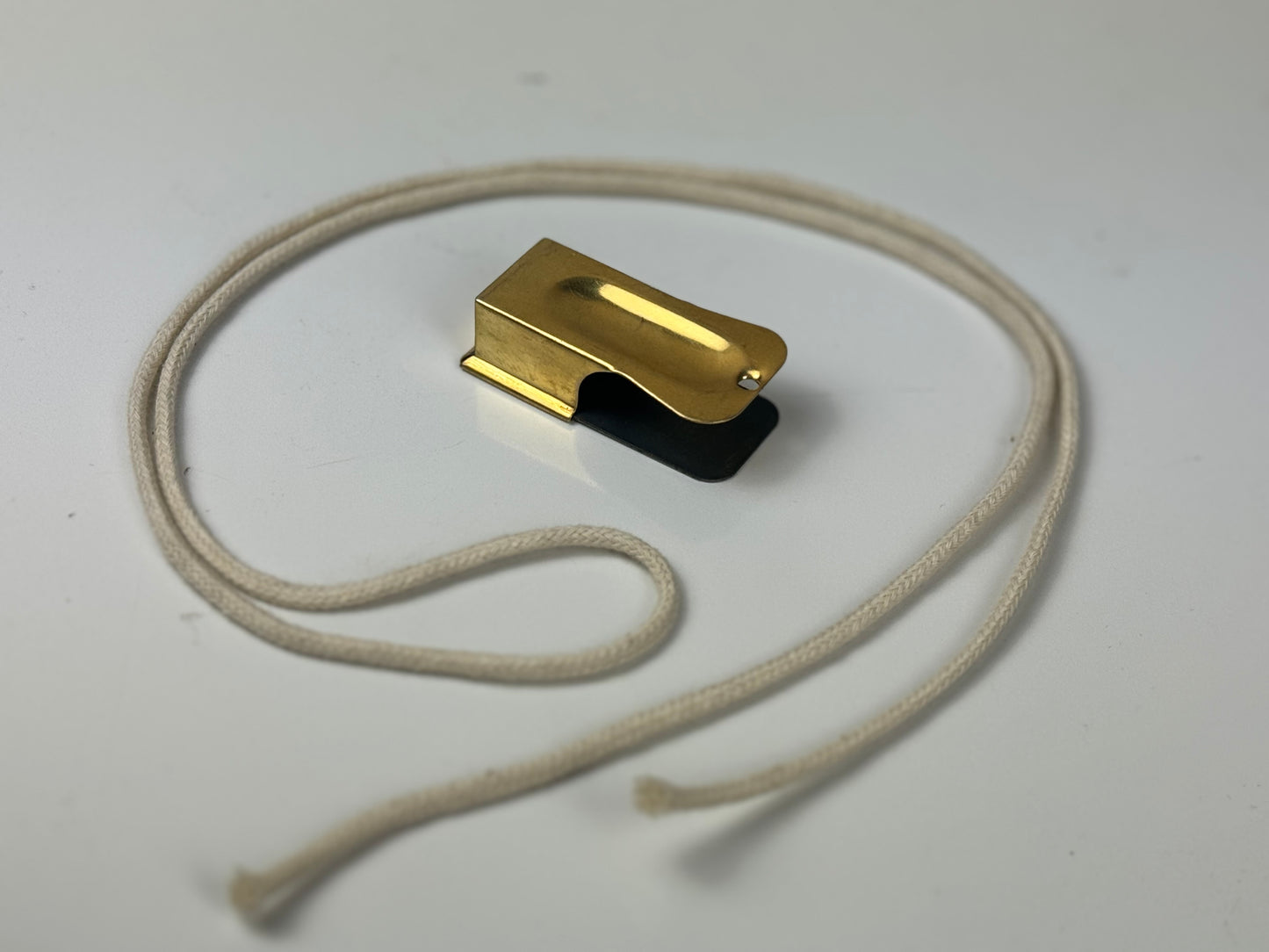Stand In The Door 1944
D-Day Cricket (with hole and string)
D-Day Cricket (with hole and string)
Couldn't load pickup availability
Arguably one of the most iconic pieces of kit used by the 101st Airborne for the Normandy invasion. One "click" to be answered by two "clicks." This was a a prime example of division leadership trying to think outside the box to help their troops be successful.
Over the years there have been many repos made of the D-Day cricket but unfortunately nearly all of them are night and day compared to an original. We wanted to offer one of the best reproductions around that features all the details of the original.
First off, we wanted our crickets to sound like an original. Most repos have a very quit "soft" sounding "pop" where originals we a very loud and sharp "crick-crack." Our replicas a just as load as originals. True you do get some slight variation of the number of decibels between crickets the same as originals but they 100% have the same loud "crick-crack" as their original counter parts.
Secondly we wanted to get the correct size and shape. Most repos are quite a bit larger than their original counterparts and the shape of the brass housing is quite different. As you can see the "thumb print" on most repos is more of a narrow rectangle with rounded ends rather than the deep oval of the original.
Then there was the snapping plate. Original crickets used a snapping plate that was made out of blued (gun metal blackening) so that they did not shine as much in the dark. Also the snapping divot was about the size of the head of a pencil eraser. 90% of reproduction crickets use a shinny piece of steel which has a very large snapping divot that is about the size of a dime. This differing shape of the divot also makes them sound quite different than originals.
Contrary to popular belief most crickets were not issued with a drilled hole or a lanyard. This being the case many troopers did not have a drill to put a hole in their cricket so they had to use an awl or a nail to punch the hole. We have gone the extra step and replicated these punched holes in our crickets for and extra layer of realism.
Lastly is the manufacturer stamp in the side of the cricket. They very first crickets that were made by the Acme company did indeed have their logo stamped into the side of their crickets. However when they got the massive order from the Army to produce thousands of them they stopped adding the stamp to help production move faster. It is impossible to know for sure how many of the original crickets had a manufacturer stamp but it is believed by most historians that less then 10% had these stamps leaving the other 90% of crickets with no stamp at all.
If you order multiple crickets we do try to test them side by side to try and send you crickets that are all in the same decibel range but they may be 100% identical. Crickets sounding differently is not the basis for a refund. We hope you understand.
















